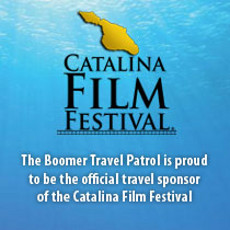Full Article:
One of the most exciting experiences in Japan is the opportunity to witness or even be a part of a local festival. I did this two summers ago in Kyoto City, Japan. Kyoto was the imperial capital of Japan from 794 to 1868, and it is still known today as the cultural capital. Saved from bombings during World War II, its1600 Buddhist temples, 400 Shinto shrines, 17 UNESCO World Heritage sites, and numerous palaces, gardens, museums, and machiya(traditional merchant houses), are well preserved and continuously being renewed and restored. Kyoto is home to three of the most famous festivals in Japan. These include: the Aoi Matsuri or Hollyhock Festival, held every May 15, the Jidai Matsuri or Festival of Ages, held every October 22, and the grand Gion Matsuri, which takes its name from the city's Gion geisha district, and runs for the entire month of July.
The Gion Masturi has been celebrated annually for over 1100 years. The most exciting days are July 17 and July 24, during the Yamaboko Junkō parade and the three nights prior, known as yoiyama. During these times, streets are closed off to automobiles and jammed with pedestrians. In the evenings, streets are lined with night stalls selling traditional snacks and sweets, including: yakitori (barbecued chicken skewers), taiyaki (a fish-shaped cake usually filled with sweet red azuki beans) takoyaki (grilled octopus balls), okonomiyaki (a savory pancake). Also onyoiyama evenings some private houses in the old kimono merchant district open their entryways to the public, exhibiting valuable family heirlooms. This custom is known separately as the Byōbu Matsuri or Folding Screen Festival and is a rare opportunity to visit some of Kyoto's historic residences.
I was among those people squeezed into the crowd on July 17, 2012. At the time, I thought, “Wow, the only difference between Gion Festival fever and Times Square New Year's Eve revelry, is the heat.” It was 95 degrees and extremely muggy. But all this was part of the experience.
Because I am not tall, I needed to get up close to see. I maneuvered my way through the rows of humanity repeating, “Sumimasen, sumimasen.” (excuse me). Finally, before me are the the magnificent portable shrine floats called mikoshi. They are intricately carved and fitted with: elaborate, mechanical puppets; long, white purification shrine-paper ribbons; and crimson and gold painted historical designs. Some are carried by dozens of men in cottonyukata (summer kimono), others, with large wheels, are pulled by yukata-clad men via long, thick ropes. There are both yama floats – with wooden columns and no passengers, and hoko floats bearing men, women and/or children. The difference is apparent even to me. From the top of the hoko, a mast-like pole extends to the sky. On board some hoko floats, men waive purification wands; on others, women dance. On still others, taiko drummers andshakuhachi (Japanese flute) musicians perform for the thousands lining the route. There is also one special float called the Naginata-boko, carrying the child chosen as the festival ambassador to Yasaka Shrine. Usually it's the son or daughter of a famous Kyoto family. The procession continues to Yasaka-jinja, where, at the Shinkosaiceremony, the divine spirit is revealed.
The Gion Matsuri originated as part of goryo-e, a purification ritual to appease the gods thought to cause fire, floods, earthquakes, and then plagues. It was declared an annual event in 970 AD.
June 28, 2023






